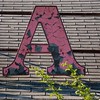First, a few fragments from my experience exploring the “Learn” section of Thing 20:
• Added
TwitterLit.com to my Twitter. I love to Twitter, and I love to read—this seemed like an obvious union of two of my hobbies.
•
Reading Trails sounds like the way I use the internet, following links to create the paths I want to pursue, but I didn’t join at this time as I have a big enough book backlog.
•
BookBrowse also looks like exactly my thing, giving me Amazon style recommendations based on what’s popular and providing reader reviews.
When I receive reference requests from students at Flagler College, most are disappointed when we have access to an ebook only and not an actual hardcover print copy. “You don’t have that as a regular book?” is a question I get all the time. However, there are students who are thrilled about ebooks. They can go home and use their own computers to access the ebooks at their digital pace. They can print pages from their home computer and choose what chapters to follow based on “Search in text” features.
Last week, I had a student approach me with a journal and ask how she could print it. She only wanted a digital version, not the awkward bulky bound print. I was a little shocked, but I showed her how to use the photocopier to get what she wanted. There were only two pages from the article that interested her, which makes me think of “micro-research,” like following hyperlinks to get only the text you need.
I read the article “Literacy Debate: Online, R U Really Reading?” in the New York Times. I really connected with the concept of digital reading and its unique literacy, and I’d like to respond to a few quotes from the article.
“One early study showed that giving home Internet access to low-income students appeared to improve standardized reading test scores and school grades. ‘These were kids who would typically not be reading in their free time,’ said Linda A. Jackson, a psychology professor at Michigan State who led the research. ‘Once they’re on the Internet, they’re reading.’”
Children suffer if they are in a digital divide, a group which often includes low-income and minority students. As the article mentioned, students who do not develop internet skills may not become valuable employees. Their skill-sets may not match requirements of higher paying jobs in the Information Age.
“’Kids are using sound and images so they have a world of ideas to put together that aren’t necessarily language oriented,’ said Donna E. Alvermann, a professor of language and literacy education at the University of Georgia. ‘Books aren’t out of the picture, but they’re only one way of experiencing information in the world today.’”
Watching my husband teach digital literacy, art of film and video, and web-based skills, I directly see the way reading and interpreting audio and visual literacy plays into the skill set he teaches. The Flagler College Communication Department teaches information literacy as a core concept of their required major coursework. For the students’ future careers, multiple media formats are necessary to communicate effectively with diverse audiences, a trend growing across many majors.
Some critics argue that the digital age is destroying literacy, but my experience is that digital literacy is
altering the meaning of traditional literacy concepts. As more libraries evolve to Web 2.0 concepts, digital literacy is necessary as much for the practitioners as it is for the users. How could I have completed Thing 20 without knowing to chain through a cloud of hyperlinks?














